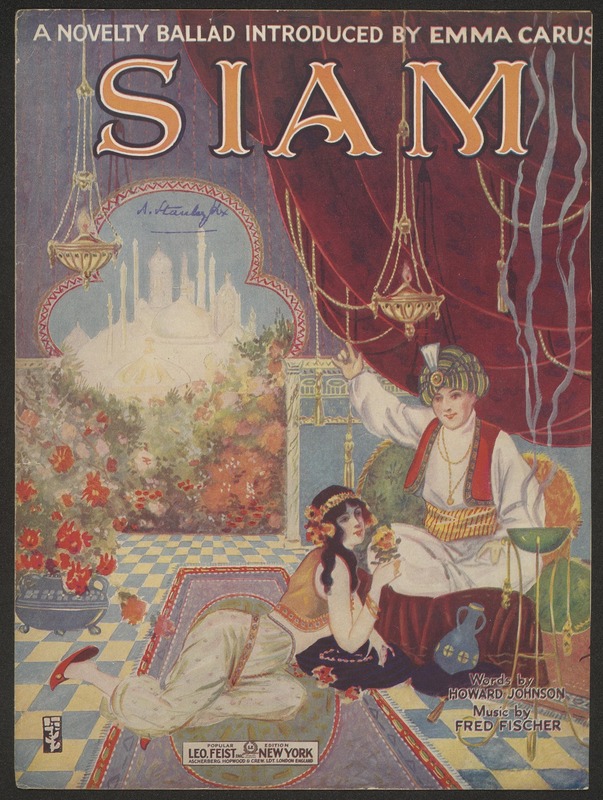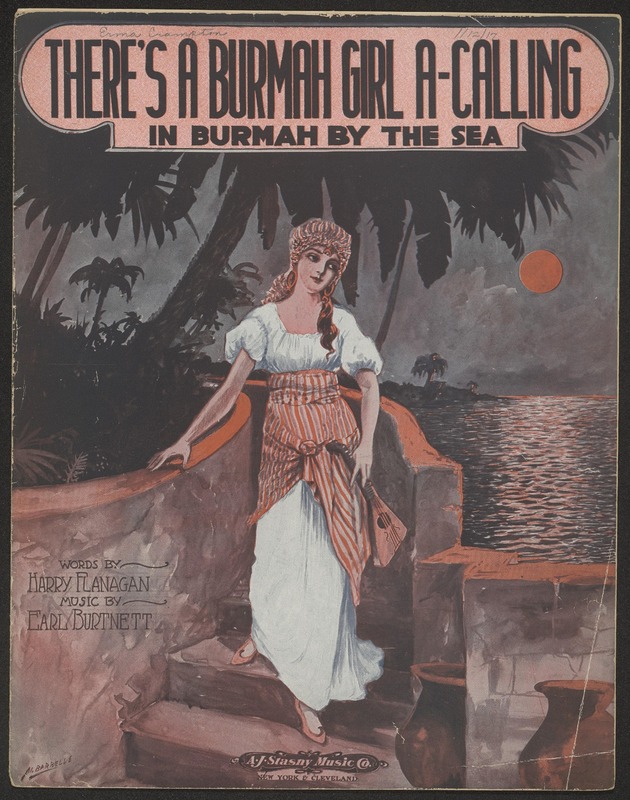Siam
One of the more subtle ways in which racism is displayed is through the ignorance and subsequent melding of distinct cultures. This is exemplified in Siam, published in 1915. Siam, now known as Thailand, is a country in Southeast Asia. However, on the cover of this song, the architecture, clothing styles, and discernable characteristics strongly reflect those associated with Middle Eastern culture. For instance, in the background, there is a large white building with turrets and domes, and in the center, a woman lounges on a man, both of whom are wearing stereotypical Middle Eastern clothing. Siam, or Thailand, being a different country in an entirely different region of the globe, has its own unique architecture, clothing style, phenotypic appearance, and other specific attributes. By conflating these two very distinct cultures, the Western creators demonstrate their racist mindsets that view anything different as the same, flagrantly disregarding each region’s individual cultural characteristics.
This is further illustrated in the lyrics of the song, as one line writes: “If you love your Omar Khayam, You’ll understand, and, Come to my Persian garden.” Omar Khayam was a renowned Persian mathematician, astronomer, and poet. This lyric proves that the authors perceived Siam and Persia to be one and the same, failing to do any research about the countries and their unique qualities, instead blending any region that is not the West as a single, monolithic entity.
There's A Burmah Girl A-Calling
The primary form of racism present in There’s a Burmah Girl A-Calling, published in 1916, is the melding of cultures. The first line goes: “Where the Bay of Bengal’s rolling, Down on India’s sunny strand, There’s a Burmah girl so sweet to see.” Although Burmah, or present-day Myanmar, makes up the Eastern edge of the Bay of Bengal, the distance from India is still relatively far. This inaccuracy demonstrates the racism the authors held, as they clearly did not research the country of focus, carelessly referring to distinct geographical regions as one and the same.
In addition, the song’s lyrics subtly sexualize Burmese women, as one Burmese woman is described to be patiently waiting for this man, presumably a Western soldier, to return back. The use of “dusky” to describe her reveals a combination of racism and objectification of Burmese women.
Exhibit curated by Vanessa Han
Sources and Further Reading:
- Egyptomania: The Western Fascination with Egypt - Exhibition Guide
- Orientalism in American Popular Culture - Naomi Rosenblatt
- The Image of Arabs in the Sources of American Culture - Marsha Hamilton

